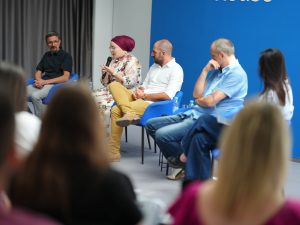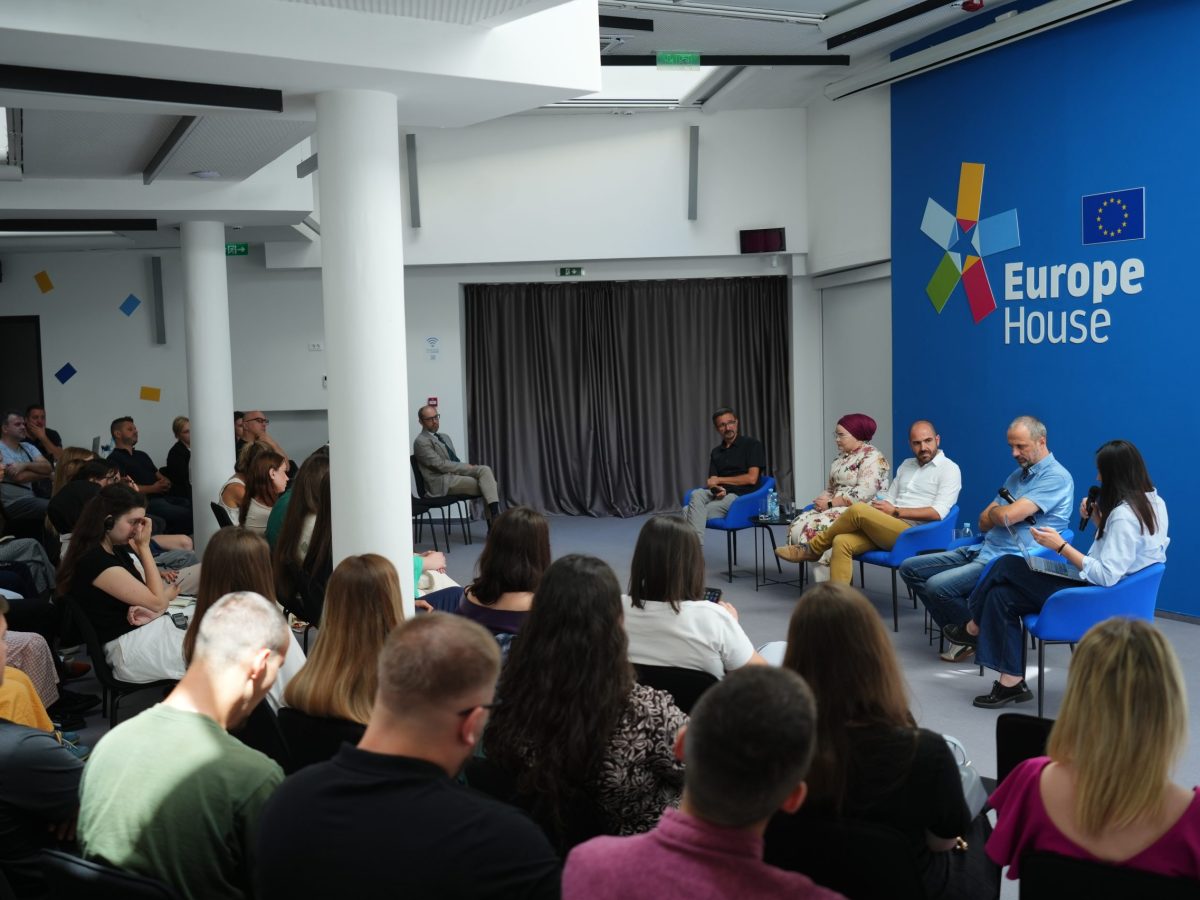Fahrudin, directed by Alen Drljević, is an animated documentary about seven-year-old Fahrudin Muminović, who survived the mass shootings in Orahovac.
On July 14, 1995, more than 800 men and boys were killed by Bosnian Serb forces in Orahovac, one of the largest execution sites of the Srebrenica genocide. Muminović survived and was later a witness in several Hague tribunal war crime trials.
The movie is based on an idea by BIRN BiH director Denis Džidić, who explained during a panel after the screening that after he interviewed Fahrudin Muminović a few years ago, he intended to make a documentary.
But he had always wondered if such a format could visually convey all the horrors the seven-year-old had experienced.
“At the end of all those recordings, while attempting to make a script, I came up with an idea that the best way to depict this was through a certain clash between something childish, animated, perhaps simplified – something that we all instinctively associate with something very innocent – and the horrors he survived,” Džidić said.
The film was screened at the Europe House for schoolchildren and students from Srebrenica and Sarajevo, who, according to the authorship team, will most authentically experience the story in this format.

Drljević noted that the film took only two-and-a-half months to produce, adding that its special form consisted of connecting animation with documentary elements.
“In fact, this is what in my opinion gives strength to this film narrative. It gives it the authenticity that could not be achieved with animation or a documentary alone,” Drljević said.
The animation was done by Antonio Ilić, who spoke about the challenges of portraying authentic emotion, explaining how he and the rest of the team jointly reflected on how to project emotion and make an impression on viewers, “so as to leave something that will be remembered”, Ilić said.
One of the youngest employees at the Memorial Center, Mirela Osmanović, whose relatives were among those killed in Srebrenica in July 1995, reflected on the fact that Fahrudin still lives in Srebrenica – and still meets people who possibly participated in war crimes and genocide.
“Not only was his childhood interrupted, but I can safely say that his life was destroyed,” Osmanović said.
Fermin Cordoba, from the European Union’s Delegation to Sarajevo, in collaboration with which the film was screened in Sarajevo, addressed the audience before the screening.
Cordoba praised the film as an example of how different multimedia formats can be used to discuss the culture of remembrance and transitional justice in different ways.
“Projects and ideas like this help to discuss such difficult topics from different perspectives, and we hope that this film will inspire others to do the same,” Cordoba said.
